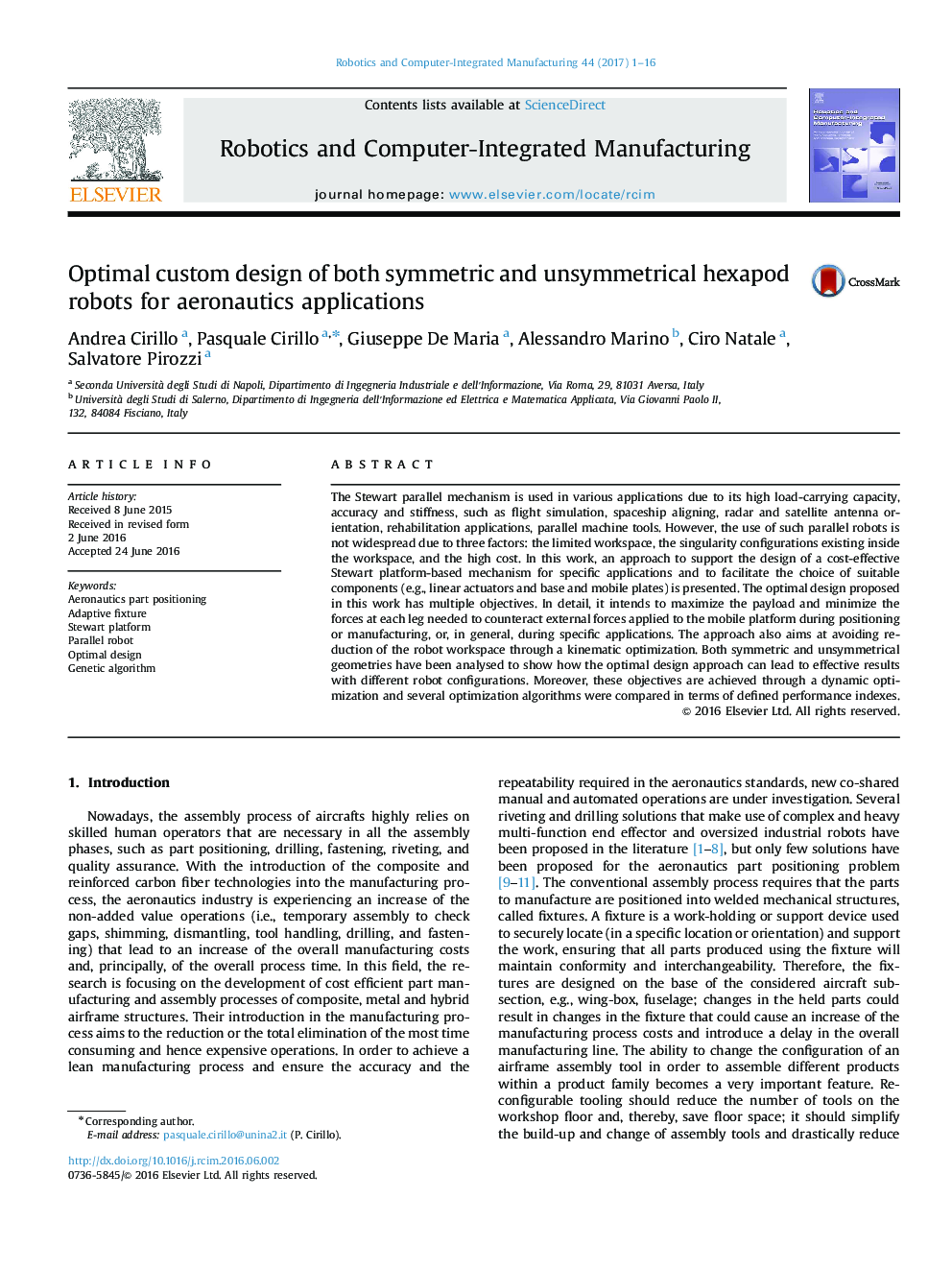| Article ID | Journal | Published Year | Pages | File Type |
|---|---|---|---|---|
| 413640 | Robotics and Computer-Integrated Manufacturing | 2017 | 16 Pages |
•A software tool for optimal design of hexapod robots is proposed.•The tool is based on Inverse Dynamics computation implemented in Matlab.•A Genetic Algorithm is proposed and compared with other optimization methods.•The method is tested with the optimal design of an hexapod robot for aeronautics applications.
The Stewart parallel mechanism is used in various applications due to its high load-carrying capacity, accuracy and stiffness, such as flight simulation, spaceship aligning, radar and satellite antenna orientation, rehabilitation applications, parallel machine tools. However, the use of such parallel robots is not widespread due to three factors: the limited workspace, the singularity configurations existing inside the workspace, and the high cost. In this work, an approach to support the design of a cost-effective Stewart platform-based mechanism for specific applications and to facilitate the choice of suitable components (e.g., linear actuators and base and mobile plates) is presented. The optimal design proposed in this work has multiple objectives. In detail, it intends to maximize the payload and minimize the forces at each leg needed to counteract external forces applied to the mobile platform during positioning or manufacturing, or, in general, during specific applications. The approach also aims at avoiding reduction of the robot workspace through a kinematic optimization. Both symmetric and unsymmetrical geometries have been analysed to show how the optimal design approach can lead to effective results with different robot configurations. Moreover, these objectives are achieved through a dynamic optimization and several optimization algorithms were compared in terms of defined performance indexes.
